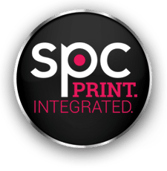Book Publishing Process Steps
You’ve poured your heart and soul into your debut novel. The manuscript might as well be made of blood, sweat, and tears. Months have passed, maybe even years, since you first started, and your work is finally ready for someone else’s eyes. But who do you pass it off to, and how? When will your collection of words truly become a book?
For those exploring traditional publishing for the first time, the process can seem mysterious, complex, and downright overwhelming. This blog sheds some light on the steps you’ll need to take next to accomplish your goal. Of course, these stages vary for genres other than fiction, but the basics are quite similar.
Before you embark on this adventure, be aware that it can take just as long, or longer, to turn your manuscript into a book as it did to write it in the first place. The following publishing process timeline is not entirely linear, or completely accurate for each individual circumstance. You’ll come to find that many of these steps overlap one another but reviewing them in this order is a great place to start.
Acquisition
First, if you would like to traditionally publish your work of fiction, hiring an agent may be beneficial to you. Whereas you’re just getting started, experienced agents have solid, existing relationships with contacts at various publishing companies. It is their job to pitch your book to publishers that they think will be a good fit.
However, your agent convincing one contact alone is only the beginning. Usually, members of different departments within the publishing company will discuss the possibility of taking on your book. These discussions will become more formal at their next regular editorial meeting. This is when the whole team reviews book proposals – hopefully including yours. Preparing your proposal will be a group effort between yourself, your agent, and their close contacts within the publishing company. Typically, proposals include subject matter, planned logistics, competitor information, cost analysis, sales projections, and more.
For your book proposal to be approved, everyone at the meeting must agree to it. Some amendments may be necessary, and the proposal might need to be reviewed a few times before a deal is struck. In the end, if the company would like to take on your book, you will also need to come to an agreement on the terms of publication. Once everyone is happy enough with the contract to sign, the real work begins!
Design
For better or worse, books really are judged by their covers. The visuals need to be compelling enough that people will not only stop in their tracks but also pick the book up and see what it’s all about. There’s a real art to this, which is why your publisher will hand the task off to a professional. They will brief the cover designer on your story’s synopsis, their target audience for your book, any established preferences, technical requirements, and so on. There will likely be multiple revision requests and cover drafts, and it can take months to nail down the final version. As the author, you will probably be consulted about the cover design at some stage, but when you’re brought into this and how much say you have over the decisions is usually up to your publisher.
The cover isn’t the only design feature of a book. However, when publishing a novel, the interior textual elements are typically simple. Complex items like worksheets and illustrations are more common in other genres. It’s still important to remember that someone will be responsible for the layout of your book, like fonts and headings, and this may take some additional time to square away.
Editing
This is one of the bulkier and lengthier parts of the publishing process. To prepare your manuscript for broader readership, it must go through multiple rounds of editing, beyond what you’re able to do on your own. First is the developmental edit which evaluates overarching aspects like structure and narrative. Then, you will work closely with a copy editor to ensure your book’s readability is optimized. They will also begin cleaning up the basics like syntax, grammar, and punctuation. Your copy editor will even help you with fact-checking and remaining consistent.
Proofreading comes last after a copy of your manuscript has been printed. This document is usually known as a galley or, wouldn’t you know it, a proof. This proof must be carefully examined for any further potential errors that have not been corrected yet. At this point, the proofreader is looking for typos. It is too late in the process to make larger edits. You may be surprised by how many little errors they can still find at this stage! The goal is to get your book as perfect as possible before it is released into the world.
Distribution
Once the editing process is finished, approved PDF files of the entire job are sent to the printer. Print production takes place within the schedule that your publisher and printer prearrange. Then, when your pages are ready, they must be bound. Finally, your physical book is born!
From there, the printer usually sends the books to a distributor’s warehouse. Distributors are responsible for processing orders from book retailers. This part of the process can be a little different depending on the size of your publishing company. But when working in the traditional publishing model, this is a typical step in between printing your book and getting copies in front of readers for purchase.
Marketing
If a book is printed and sent to a warehouse, but no readers see it, is it even published? That rhetorical question was a way of saying that it’s time to announce your impending book release! To do this, your publisher will create a marketing plan that builds awareness of your book and gets people excited to buy their own copy.
Before the plan can be put into action, a release date must be set. This normally happens when the developmental editing is finished so they can be accurate with the timing. Your book will become available to retailers some weeks prior to the release date. But the public won’t be able to get their hands on it until around six to eighteen months after developmental editing is completed. Depending on this timeline, it may be a while still until marketing efforts kick off. If the push begins any further in advance than half a year, all that good buzz may die down prematurely.
As editing continues, marketing will begin. Sometimes publishers send proofs to the media and literary influencers in the hopes that they will review your book and spread the word. This is a fantastic way to increase sales, but there’s no guarantee that anyone will take the bait.
Other marketing efforts typically include social media, advertising, emails, and direct mail. More traditional publicity will probably occur too, so don’t be surprised if you’re asked to attend events and participate in interviews. Your publisher will most definitely want you to get involved in some way, so it’s time to change out your writer pants for your marketer pants. Even if you’re not keen on this, it’s crucial for the success of your book.
Sales
Your publishing company has a sales team that’s responsible for what happens in between the distributor’s warehouse and the reader’s home. It is the job of these employees to present book retailers with the publisher’s upcoming offerings. These retailers include chain stores, ecommerce websites, supermarkets, independent shops – basically anywhere books are sold.
This is why it’s important for your cover to be designed early in the publishing process. Before your book even gets close to the end reader, sales representatives need to convince the retailers that it’s worth stocking. Aside from the design, they only have time to review a short blurb or a few key bullet points for each book. Retailers may also want to know how the publisher will support sales with marketing, because although they’re the last to see it, readers really do determine the ultimate success of a book. There needs to be proof of interest.
On a side note, you may be wondering how retailers make a profit. Well, books are sold to them at a discount off the recommended retail price. Also, their risks are low because if they can’t sell a book, the deal is that they can return the extra copies and get their money back. Thankfully this means that a compelling synopsis may be all you need to get your book on the shelves.
A reader purchasing your book from a retailer is pretty much where the book publishing process ends. Then it’s time to celebrate with all the people who helped you along the way! Hopefully learning these steps has left you feeling better informed. Now you can go into publishing meetings with confidence and turn that manuscript into a book!





Leave a Reply